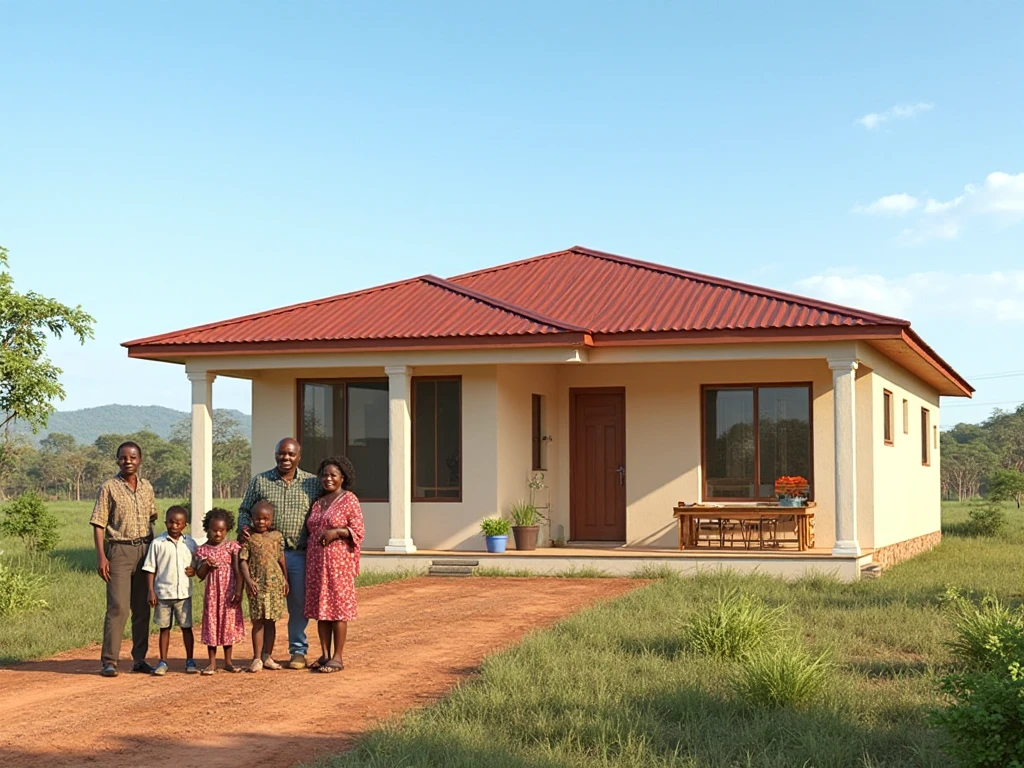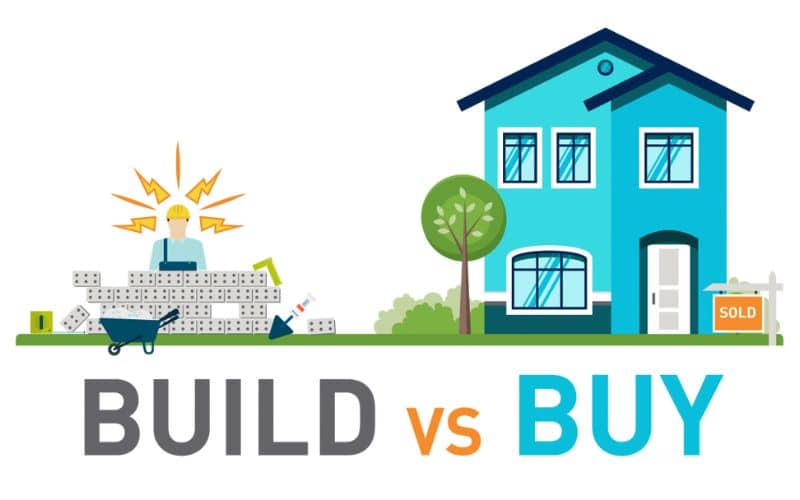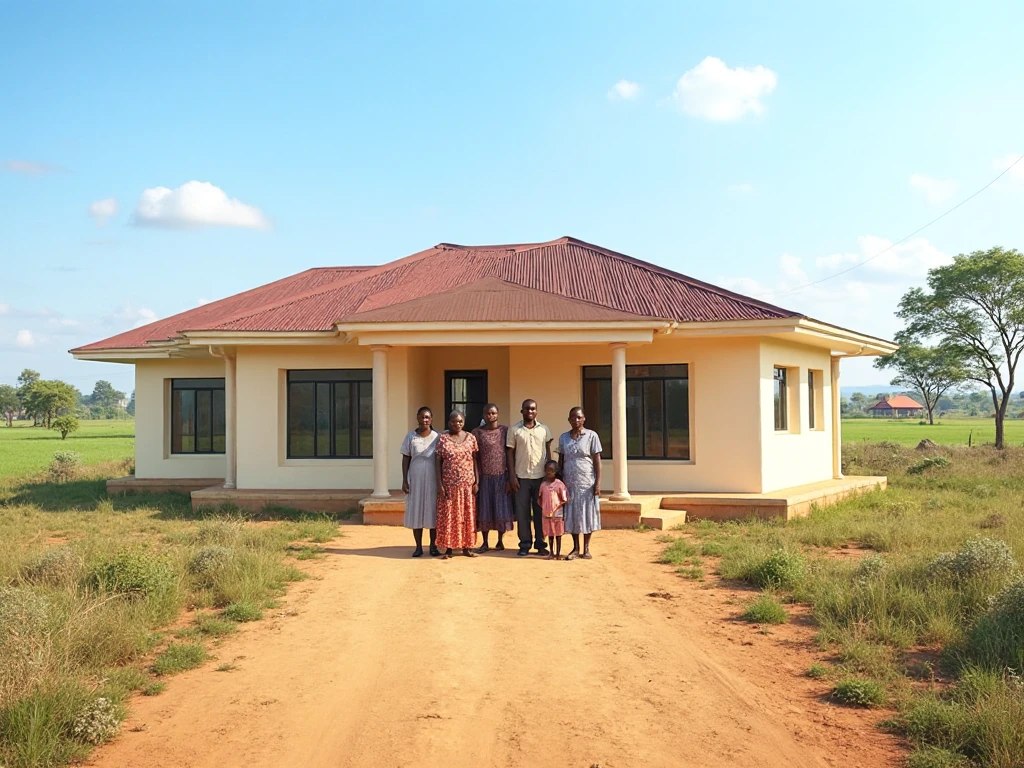Cost of Building a 3-Bedroom House in Rural Kenya: A Complete Guide
The dream of owning a home in rural Kenya is increasingly within reach. Understanding the cost of building a 3-bedroom house is the first step to turning this dream into reality.
Why the 3-Bedroom House is a Popular Choice
For many Kenyan families, the dream of homeownership begins with a 3-bedroom house. It strikes the perfect balance between size, affordability, and functionality, making it one of the most common housing designs in both urban and rural areas. But what does it actually take, in terms of money and planning, to build one?
The cost of building a 3-bedroom house in rural Kenya can vary widely, influenced by location, building materials, labour costs, and design choices. On average, it ranges from KSh 2.5 million to KSh 4.5 million, though these figures can shift depending on your approach. To give homeowners clarity, this guide breaks down the 3-bedroom bungalow construction cost in Kenya, different types of house plans, and how rural settings affect expenses.

1. Why Build in Rural Kenya?
Rural house construction in Kenya is often cheaper than in urban centres because land prices are lower, and labour tends to be more affordable. Many families also inherit land in the countryside, removing one of the largest costs of homeownership. Additionally, rural areas offer larger plots, making it easier to build a spacious house and even add a garden, poultry shed, or rental units later.
However, rural construction settings also come with challenges: transporting materials over long distances, limited access to skilled labour, and sometimes higher costs for sourcing water or electricity. Therefore, before estimating the cost of building a 3-bedroom house, it is vital to understand how your location impacts expenses.
2. The Role of Design: 3-Bedroom House Plans in Kenya
The starting point of your journey is choosing a suitable design. 3-bedroom house plans in Kenya vary from simple rectangular layouts to modern bungalows with en-suite bedrooms and open kitchens.
- Basic Rural Design: A simple rectangular bungalow with minimal finishes. It is affordable and practical for rural families.
- Modern 3-Bedroom Design: Includes master ensuite, large windows, tiled floors, and contemporary roofing.
- Customised Plans: Tailored designs to match unique family needs are usually more expensive.
A well-chosen plan influences construction costs and impacts your future living experience. Consulting a qualified architect can save you money in the long term by avoiding design flaws that lead to costly adjustments.

3. Breaking Down the Cost of Building a 3-Bedroom House
The cost of building a 3-bedroom house typically falls into these categories:
- Foundation and Structure (20–25%): Includes excavation, stone, cement, and reinforcement steel.
- Walls and Roofing (30–35%): This category includes stones, bricks, timber, trusses, iron sheets, or tiles.
- Finishes (25–30%): Flooring, plastering, paint, ceilings, doors, and windows.
- Utilities and External Works (10–15%): Plumbing, electrical wiring, septic tank, fencing, and landscaping.
In rural Kenya, the cost per square meter averages KSh 35,000–KSh 50,000, depending on finishes. For a 120 m² 3-bedroom bungalow, this translates to between KSh 4.2 million and KSh 6 million.
4. Key Factors That Affect Costs
When you are planning your rural house construction, consider the following key points, which can significantly affect the cost of building a 3-bedroom house.
- Location and accessibility: Transporting materials to remote rural areas can add up to 15% more to the total cost. Roads, distance from suppliers, and availability of quarries all matter.
- Building materials in Kenya: Locally sourced stones, sand, and timber reduce expenses. However, imported finishes such as tiles, granite countertops, or steel roofing sheets can increase the final cost.
- Labour costs: Skilled masons, plumbers, and electricians may charge less in rural areas, but the scarcity of expertise can sometimes make quality labour more expensive than in towns.
- Finishes and lifestyle choices: Opting for high-end finishes such as hardwood floors or gypsum ceilings will raise costs. Families on a budget often choose cement floors and simple paint to cut expenses.
5. Cost of a Basic vs Modern 3-Bedroom House
This comparison of a basic versus a modern 3-bedroom house indicates that the construction cost of a 3-bedroom bungalow in Kenya is largely determined by finishes and materials, even when the design footprint remains similar.
- Basic Rural Bungalow: Approximately KSh 2.5M–3.5M with standard finishes like cement flooring, corrugated roofing sheets, and steel casement windows.
- Modern 3-Bedroom Bungalow: Between KSh 4M–6M with en-suite bedrooms, tiled floors, aluminium windows, and modern roofing designs.

6. Rural House Construction in Kenya: Practical Considerations
When constructing in rural areas, several unique factors influence not just cost but also timelines:
- Water Supply: Drilling a borehole or setting up rainwater harvesting may be necessary.
- Power Supply: If the rural home is off-grid, installing solar panels can add upfront costs but save money in the long term.
- Security and Fencing: Rural plots often require perimeter fencing for privacy and safety.
- Future Expansion: Rural homes allow for easy extensions, but structural planning is crucial from the beginning.
7. Affordable Housing and Self-Build Options
The government’s Affordable Housing Kenya initiative primarily targets urban residents, but rural families often pursue self-build options. By sourcing materials locally, hiring neighbours for labour, and avoiding expensive contractors, families can save up to 25% of their expenses. However, this requires careful supervision to maintain quality standards.
For those asking, “I want to build a house on my land. Where do I start?” The solution involves budgeting, hiring a qualified fundi (a skilled construction labourer), and sourcing reliable building materials ahead of time.
8. Hidden Costs to Watch Out For in Construction
When planning the cost of building a 3-bedroom house, remember that not all expenses are obvious:
- Building permits: County governments require these before construction begins. Depending on the location, the cost typically ranges from KSh 50,000 to KSh 150,000. Failure to obtain them may lead to high penalties or demolition.
- Transportation costs: Delivering bulky materials (sand, cement, ballast) to rural areas can be expensive, especially with poor road conditions. Transport can add 10–15% to your budget.
- Furnishings and appliances: Beds, sofas, cookers, and electrical fittings are often forgotten during budgeting, which can unknowingly significantly raise construction expenses.
- Contingency fund: A 10% budget cushion helps manage emergencies like price increases, design changes, or unforeseen repairs.
9. Is It Cheaper to Build or Buy?
A common debate for homeowners is whether to build or buy:
- Construction is often cheaper in rural Kenya: Land is either inherited or relatively affordable. Developers usually add profit margins to completed homes, making them more expensive.
- Customisation vs. convenience: Building allows you to design your house to your personal taste, but it requires time, close supervision, and management by contractors. Buying, on the other hand, is quicker but less flexible.
- Urban vs. rural difference: Buying in cities like Nairobi and Mombasa is attractive due to the ready infrastructure and security. However, the cost of building a 3-bedroom house in rural areas is still lower compared to urban purchase prices.

10. Practical Tips to Reduce Costs
You can significantly cut costs with smart strategies:
- Use locally available materials: Source sand, stones, and timber from nearby suppliers to save on transport while supporting the local economy.
- Buy in bulk: Cement, iron sheets, and tiles are cheaper when purchased wholesale, and buying in bulk also protects you from price fluctuations.
- Hire a qualified architect: A good architect will design an efficient, modern 3-bedroom house plan in Kenya, prevent structural errors, and ensure compliance with county permits.
- Build in phases: Focus first on essentials (foundation, roofing, plumbing). Leave finishing touches like a ceiling design or landscaping for later, when funds allow.
- Close supervision and montoring: Supervise to avoid material wastage, theft, or contractors’ shortcuts; every bag of cement counts.
Conclusion: Planning is Everything
The cost of building a 3-bedroom house in rural Kenya can feel overwhelming, but with proper planning, it is achievable for most families. From choosing the right bungalow design to sourcing affordable building materials, every decision affects the outcome. Rural home construction offers a unique opportunity for cheap, personalised housing, especially for families with land.
Building a secure foundation for your family’s future is the ultimate goal of the journey to homeownership. Whether your goal is a modest bungalow or a modern masterpiece, the key is to balance costs, quality, and long-term comfort.
Ready to Start Your Construction Journey?
Check out our complete guide on how to build a house in Kenya and everything needed for the whole process. At ConstructionFrontier.com, we provide industry insights, cost guides, and expert tips to help you plan smarter and build better. Explore our resources today and take the first confident step toward your dream home.





